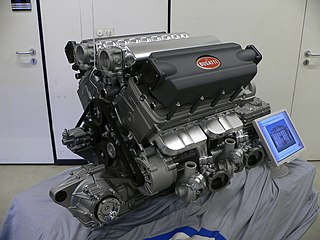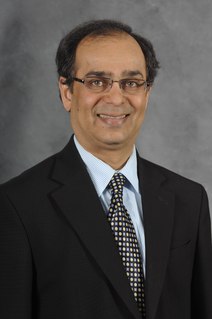
Mechanical engineering is the discipline that applies engineering physics, engineering mathematics, and materials science principles to design, analyze, manufacture, and maintain mechanical systems. It is one of the oldest and broadest of the engineering disciplines.
Leslie Earl Robertson is an American engineer. He was the lead structural engineer of the Twin Towers of the original World Trade Center in New York City. He has since been structural engineer on numerous other projects, including the Shanghai World Financial Center and the Bank of China Tower in Hong Kong.
Structural engineers analyze, design, plan, and research structural components and structural systems to achieve design goals and ensure the safety and comfort of users or occupants. Their work takes account mainly of safety, technical, economic and environmental concerns, but they may also consider aesthetic and social factors.
Raymond David Mindlin was an American mechanical engineer, Professor of Applied Science at Columbia University, and recipient of the 1946 Presidential Medal for Merit and many other awards and honours. He is known as mechanician, who made seminal contributions to many branches of applied mechanics, applied physics, and engineering sciences.
Olgierd Cecil Zienkiewicz was a British academic of Polish descent, mathematician, and civil engineer. He was born in Caterham, England. He was one of the early pioneers of the finite element method. Since his first paper in 1947 dealing with numerical approximation to the stress analysis of dams, he published nearly 600 papers and wrote or edited more than 25 books.
Dr. Ralph Brazelton Peck was an eminent civil engineer specializing in soil mechanics. He was awarded the National Medal of Science in 1975 "for his development of the science and art of subsurface engineering, combining the contributions of the sciences of geology and soil mechanics with the practical art of foundation design".
Bruce Russell Ellingwood is an American civil engineer and a Professor of Civil and Environmental Engineering at the Colorado State University. He is a member of the National Academy of Engineering and is a two-time recipient of the Norman Medal, the highest honor granted by the American Society of Civil Engineers for a technical paper judged worthy of special commendation for its merit as a contribution to the Engineering Science. Ellingwood also received the Walter P. Moore Jr. Award by the ASCE. He is a pioneer in the field of structural reliability.
Man-Chung Tang Ph.D., P.E., Dist.M.ASCE, NAE, CorrFRSE is a Chinese-born American civil engineer and businessman. Tang is Chairman of the Board and the Technical Director of T. Y. Lin International, an American design and construction company.
John Hillman, P.E., is a structural engineer, invented the hybrid composite beam (HCB) and founded the HC Bridge Company. In 2010, he was recognized with the Award of Excellence from Engineering News-Record.
Thomas Denis O’Rourke is an American educator, engineer and serves as the Thomas R. Biggs Professor, Civil & Environmental Engineering at the College of Engineering, Cornell University. Professor O’Rourke took his Bachelor of Science in civil engineering at Cornell's engineering college in 1970 and his doctorate at the University of Illinois at Urbana-Champaign in 1975.
Dan Mircea Frangopol is an American civil engineer and the inaugural holder of the Fazlur R. Khan Endowed Chair of Structural Engineering and Architecture at Lehigh University, Bethlehem, Pennsylvania.
Eduardo Bayo graduated with Honors in Civil Engineering from the Polytechnic University of Madrid in 1976. After 2 years of consulting as a structural engineer with Gibbs & Hill, he attended U.C. Berkeley receiving his Masters in Engineering in June 1980 and his Ph.D. in January 1983, in the field of Structural Mechanics. He specialized in structural analysis, finite element technology and computational dynamics. After completing his Ph.D he led a research group at INITEC, one of the largest engineering-consulting firms in Spain, responsible for the solution of specialized problems in structural analysis and design.
Jacob Fish is a researcher and professor in computational mechanics. He was the Rosalind and John J. Redfern, Jr. Chaired Professor of Mechanical and Aeronautical Engineering at Rensselaer Polytechnic Institute and director of RPI's Multiscale Science and Engineering Center. He is currently the Robert A. W. and Christine S. Carleton Professor in Civil Engineering at Columbia University.
Ken P. Chong is a Research Professor at The George Washington University and a former associate at the National Institute of Science and Technology (NIST). He was the Engineering Advisor, Interim Division Director and program director of Mechanics and Materials at various times for 21 years at the U.S. National Science Foundation. He has published over 200 refereed papers, and is the author or coauthor of twelve books including "Elasticity in Engineering Mechanics" now in the 3rd edition,{http://www.wiley.com/WileyCDA/WileyTitle/productCd-0470402555.html},{https://www.amazon.com/Elasticity-Engineering-Mechanics-Arthur-Boresi/dp/0470402555},"Numerical Methods in Mechanics of Materials, 3rd ed: With Applications from Nano to Macro Scales",{https://www.crcpress.com/Numerical-Methods-in-Mechanics-of-Materials-3rd-ed-With-Applications/Chong-Boresi-Saigal-Lee/p/book/9781315146010} "Intelligent Structures", "Modeling and Simulation-Based Life Cycle Engineering", "Mechanics of Oil Shale", which included fracking and "Materials for the New Millennium". He has taught at the University of Wyoming, University of Hong Kong, University of Houston,and George Washington University [www.gwu.edu/] and had been visiting professor at MIT and University of Washington.
Robert M. Koerner is an American engineer and academic. He is Professor Emeritus at Drexel University and Director Emeritus of the Geosynthetic Institute.

Medhat Haroun was an Egyptian-American expert on earthquake engineering. He wrote more than 300 technical papers and received the Charles Martin Duke Lifeline Earthquake Engineering Award (2006) and the Walter Huber Civil Engineering Research Prize (1992) from the American Society of Civil Engineers.

Wiesław Kazimierz Binienda is a Polish-American scientist, PhD, and professor at the University of Akron.

Dr. Nemkumar Banthia, PhD, PEng, FRSC, is a Professor of Civil Engineering at the University of British Columbia and the CEO of IC-IMPACTS. He is best known for his research in the fields of cement-based and polymer-based fiber reinforced composites, particularly on testing and standardization, fracture behavior, strain-rate effects, durability and development of sustainable materials.
Abdeldjelil "DJ" Belarbi is an American Structural Engineer and Researcher whose research deals with the design, evaluation, and rehabilitation of reinforced and prestressed concrete bridges and buildings. He is currently the Hugh Roy and Lillie Cranz Cullen Distinguished Professor at University of Houston and previously a Distinguished Professor of Civil Engineering at Missouri University of Science and Technology.

Venkatesh Kumar R Kodur, born in Kodur village in Karnataka India, received his bachelor's degree in Civil engineering from the University Visveswaraya College of Engineering, Bangalore, India, in 1984. He received his M.Sc. and Ph.D. degrees from Queen’s University, Canada, in 1988 and 1992, respectively. Following a brief stint as a Post-doctoral Fellow at Royal Military College, Kingston, Canada, he joined the National Research Council (Canada), where as senior scientist, he carried out extensive research in structural fire safety field. In 2005, he joined the faculty of Michigan State University (MSU), where he is currently a University Distinguished Professor and Chairperson of the Department of Civil & Environmental Engineering. Kodur has established unique fire test facilities and highly acclaimed research program in structural fire engineering area at MSU and is the founding director of the Center on Structural Fire Safety and Diagnostics.









